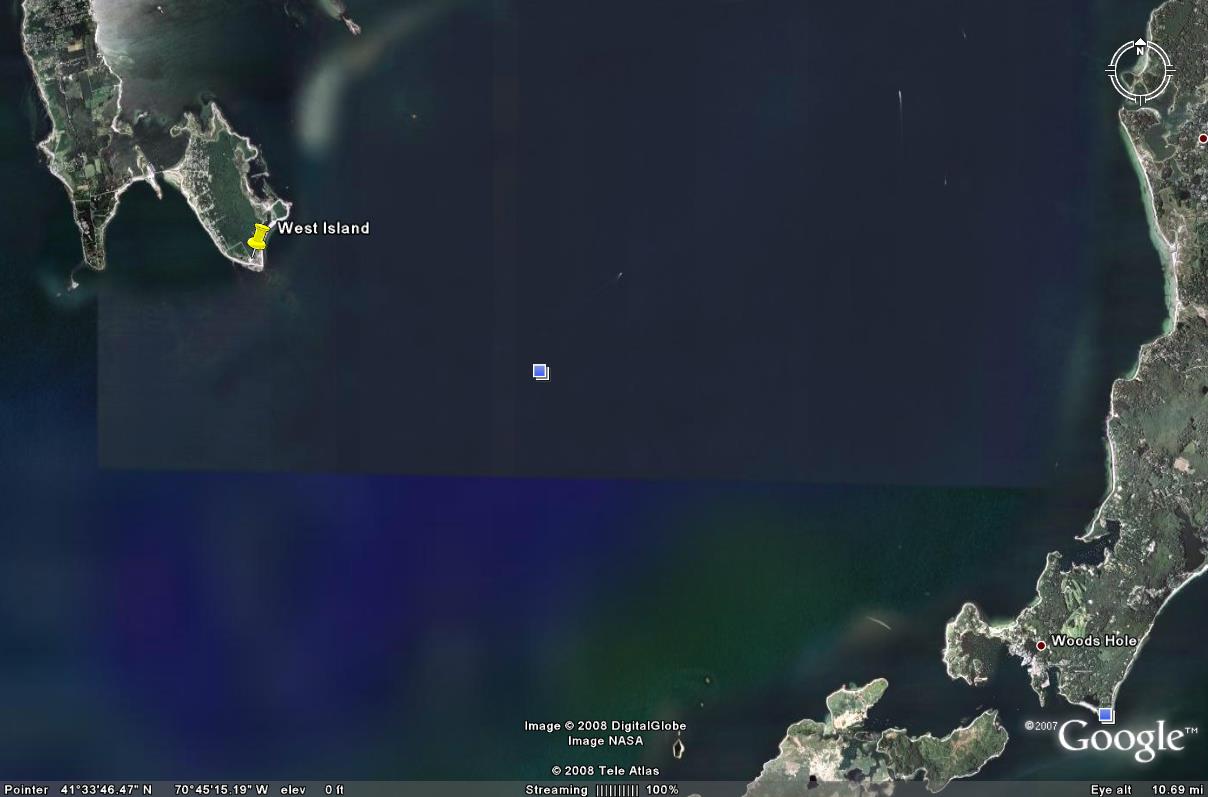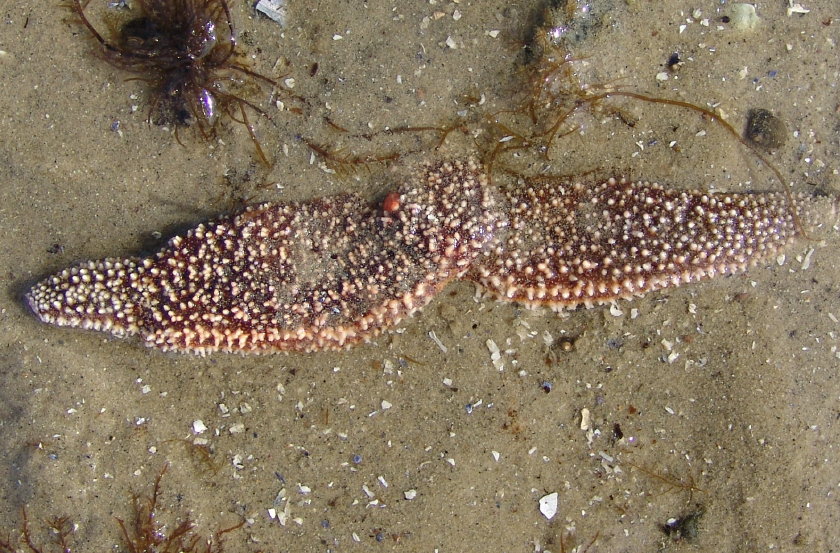As humans expand development and invade the few remaining slices of natural habitat in coastal New England, wild creatures are increasingly forced to survive on the edge of civilization, spilling over into once wild, now “domesticated” lands. For smaller, secretive and non-aggressive animals such as turtles and rabbits and squirrels and chipmunks, we tolerate their presence so long as they don’t get in the way of our cars or lawn movers, or dare to scavenge in our gardens and garbage. For the larger, more predatory critters, their very existence in our midst poses a threat to our manicured and domesticated lives. “Coyotes and foxes and snakes, oh my. Hide your pets, guard your children; the wilderness is coming to a backyard near you!”
Red Fox (Vulpes vulpes) on West Island Sun Deck
We must admit that Turtle Journal loves foxes like prodigal children. Back fifteen years or so, a wily female fox “learned” how to hunt diamondback terrapins in Wellfleet Bay and developed quite a taste for them. She killed over a hundred of these threatened turtles and fed them to her kits. We worried that she might pass along this skill to her offspring, but luckily, the skill passed with her. So, now we can love foxes without reservation.
As the Turtle Journal team drove to West Island on Saturday, hugging the shoreline along Balsam Street heading for the south point, we spotted a beautiful red fox lazing on the side of the road, relaxing like a puppy dog and savoring the long rays of late afternoon sunshine. We slowed to a crawl to get cameras ready, but impatient weekenders in the car behind us seemed oblivious to the fox, swerved around us and tore down the street to get to the beach for sightseeing. Go figure.Â
Greater New Bedford Area with West Island on the Lower Right
West Island lies on the western coast of Buzzards Bay in Fairhaven and within the Great New Bedford area. The middle of the island is largely pristine woodlands with dense cottage development along the western shore. The north, south and east coasts of West Island are covered with sometimes sandy, often rocky beaches with a scattering of salt marshes throughout. Terrapins were documented on West Island a couple of decades ago, but no sign of their presence has been observed for the last five years of intense search.
The fox bolted across the street toward cottages along the beach. Sue jumped out with the camera, while Don ran interference with an upset resident. “You’re not going to do anything to it, are you? That’s MY fox; I’m taking care of it. You’re not going to take it, are you? It lives in my yard and I’m taking care of it.” While Sue shot footage, Don spoke to the woman about the dangers to the animal and to her family, too, of trying to domesticate a wild fox in such a highly trafficked and developed location.Â
Red Fox Relaxing on Sun Deck of Closed Summer Cottage
Sue noted that the fox approached her repeatedly as she photographed it. At first she thought it might be rabid, but on reflection, it may simply have lost its instinctive fear of humans from being “cared for.” Not a useful survival trait for a wild fox. You can see how the animal has made itself at home on the sun-drenched decking of a seaside cottage closed for the season.
Red Fox Returning to Her Litter with a Mouthful (Two Chipmunks)
We had a similar experience in South Wellfleet this spring. A couple of female foxes raised their kits on the decks of closed cottages abutting the salt marsh of Lieutenant Island. Not always looking in the best of condition, one of the females learned the skill of hunting chipmunks, an extremely plentiful food supply among the cottages of the Outer Cape. Once summer residents return in June, though, life becomes more problematic for these wild foxes reared so close to human development.
Sippican Harbor Red Fox Foraging in Salt Marsh at Sunset
In 2005 we observed red fox in Marion Village along Sippican Harbor. The one pictured above was hunting at twilight along the salt marsh surrounding Tabor Academy’s marine science center. We spotted fox that summer and early fall romping through the Tabor campus, but haven’t seen any since then.








